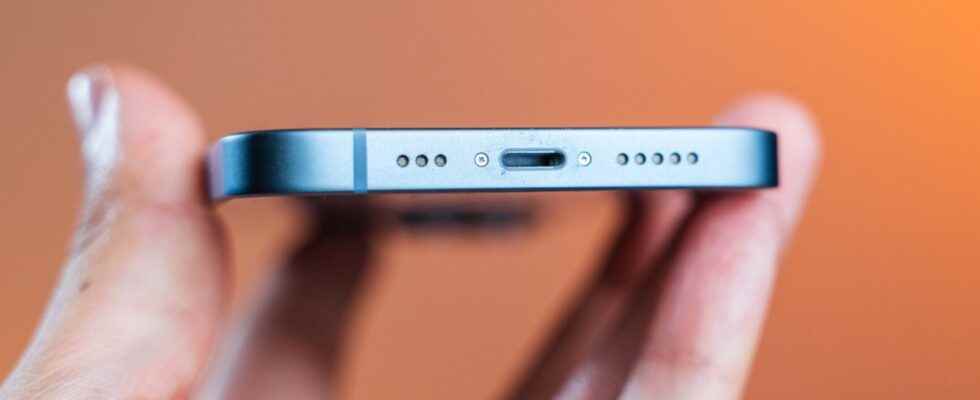December 28, 2024 is the deadline set by the European Union for the switch to USB-C on all smartphones. By then, Apple should have released two new generations of its iPhones, which leads some to believe that the brand will circumvent the law until September 2025.
The mandatory USB-C port for all electronic devices is about to become a reality. After having mentioned a vague “2024”, the European Union is now giving a precise date for its law aimed at reducing electronic waste and facilitating the charging of devices in Europe.
In the directive published on December 7, 2022 in the Official Journal of the Union, we read that manufacturers have until December 28, 2024 to adapt to the law, at the risk of not having the right to release new devices on the European market. Smartphones and a few other categories of devices will then have to charge via USB-C (unless they have no other charging port, the European Union makes an exception for devices that are powered only by induction) .
This implementation date raises questions, since Apple, the manufacturer mainly targeted by this European directive, usually releases its products three months earlier, in September. Some see it as proof that Apple will never adopt USB-C, or at least bypass it all the way. The reality may be different.
iPhone 15 or iPhone 17?
On paper, the date of December 28, 2024 seems poorly chosen. Given Apple’s schedule, it allows the brand to escape the European directive until 2025. By then, Apple should release three generations of its flagship smartphone:
- September 2023 : iPhone 15 released (names are theoretical), no obligation to switch to USB-C.
- September 2024: iPhone 16 release, no need to switch to USB-C.
- December 28, 2024 : entry into force of the European directive, all smartphones that will be released after must choose between USB-C and wireless charging only.
- September 2025: release of the iPhone 17, the first iPhone that will not be able to use a Lightning port.
Will Apple play with the watch, as some suspect? Postponing the switch to USB-C for two years could allow the brand to perfect its wireless charging technology, to skip a physical connector in 2025. However, this theory hardly seems plausible. We know that Apple plans its launches several years in advance and that, given the volume of iPhone sales, removing a physical connector could be extremely dangerous (especially in terms of customer service: how to diagnose an iPhone that no longer turns on if it can no longer be plugged in?). Wireless charging is also slower, more energy-intensive and does not transfer a lot of data quickly.
Logically, iPhones should therefore retain a physical charging port for at least several years. Will Apple adopt USB-C at the last moment, with the iPhone 17? Again, this is unlikely. Several reliable sources, including analyst Ming-Chi Kuo, indicate that Apple has asked its suppliers to provide it with USB-C ports for its entire iPhone 15 line as early as September 2023 (at various speeds, since USB-C is only a connector. The USB standard, it is not regulated by the European Union). Apple, by the voice of one of its vice-presidents, has also indicated that it will comply with the law.
Other signs point in the direction of a transition to USB-C. All iPads and Macs now use the universal port, while the Apple TV 4K remote, a November 2022 refresh, has truncated its Lightning port for a USB-C port. Logic would dictate that the other products launched by Apple in March, such as possible new AirPods or accessories (keyboard, mouse, etc.) would also switch to USB-C, before the iPhone in September 2023.
Financially, the switch to USB-C could cost Apple… unless the brand successfully completes the transition. Apple today takes a commission on sales of Lightning accessories, which could push it to maintain the connector until the end. On the other hand, if Apple creates an ecosystem of adapters and new accessories adapted to USB-C, it should be able to quickly make its transition profitable. Especially since USB-C is not unknown to her, since she has been using it in her Macs since 2015.

